| |
|
|
|
APACHE CANTEENS – SCARCE
APACHE WARS ERA NATIVE WOVEN BASKETRY SPECIMENS IN VERY
GOOD CONDITION:
Relatively scarce artifacts of the Apache Wars Era,
commonly known as Apache Canteens, these are masterly
executed examples of the native basketry art. Woven in
the same tight method as other Apache basketry pieces,
these canteens features rigid faces and side pieces, and
masterfully fashioned integral spouts and a pair of
suspension cord guides.
While the Apache’s
traditional method of carrying water was the Tus, as
they were exposed to the European cultures and
accoutrements, certainly the native basket makers rose
to the challenge to copy those pieces they found
useful. Between the centuries of exposure to the
Spanish, Mexicans and Americans who ventured into
Apacheria, there was ample opportunity to become
familiar with the form and function of the canteens they
carried. To their credit, not only did the Apache
successfully copy the form of the canteen in their
native basketry, but they created a piece which is not
only functional, but presents as an attractive piece of
art.
Obtained from an advanced
collection of unique 19TH Century Apache
items, these canteens shows evidence of use as seen from
the polishing of the face surfaces where it was carried
against a person’s body or hung against the body of a
horse. These are not specimens which were produced for
the early 20TH Century tourist trade, but are
canteens which certainly saw use in the arid Southwest
frontier where any vessel of water meant the difference
between life and death.
These are very beautiful
pieces which would complement a collection of any number
of different subject concentrations – Native American,
Indian Wars frontier army to name only two. To be
honest, it took some doing to pry these out of my wife’s
hands and list them for sale. Quite scarce with very
few of these appearing on the market, and given that as
long as we have them she can still change her mind about
selling them, I wouldn’t wait too long to buy.
I have the following
canteens listed below, each described individually with
accompanying photographs.
NOTE:
If you are interested in other Native American
pieces and artifacts related to the American West,
browse through those listings via this link:
CLICK HERE
|
|
NO.
1
APACHE CANTEEN - IN VERY GOOD CONDITION:
Measuring 9 ½” diameter and 4” thick at the center, this
canteen resembles the ovoid shape of the Civil War and
Indian War US Army canteens without the distinctive flat
rim featured on the canteen listed below as “NO. 3”.
This canteen has survived in very good condition,
showing only the slightest evidence of wear and age.
The weave is tight throughout with no weak points or
breaks. The seam where the two sides meet are still
very tight showing only the slightest evidence of wear,
none of which affects the integrity of the canteen nor
does this minor loss open any seams or edges. There are
a couple of spots where pine pitch was used to seal the
weave. These applications of pitch are commonly seen on
larger Apache tus and ollas and the pitch shows age and
was certainly applied concurrent with the use of this
canteen.
The spout is an amazing
example of basket maker’s skill as it is woven as an
integral part of the canteen, rather than being a
separate addition. The spout shows some wear around the
rim, but it shows no weakness nor is it loose. Both
suspension strap guides are present and intact, large
enough to have accommodated a wide canvas or hide strap
which would have been necessary to carry a canteen of
this size. (See the size comparison photo below,
showing this canteen pictured along side a standard
Civil War canteen.) (0814) $550
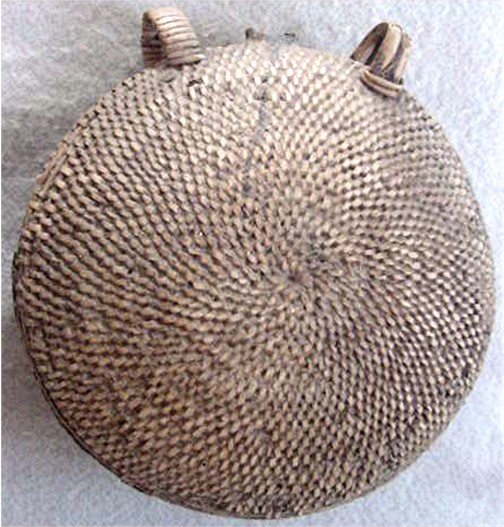 |
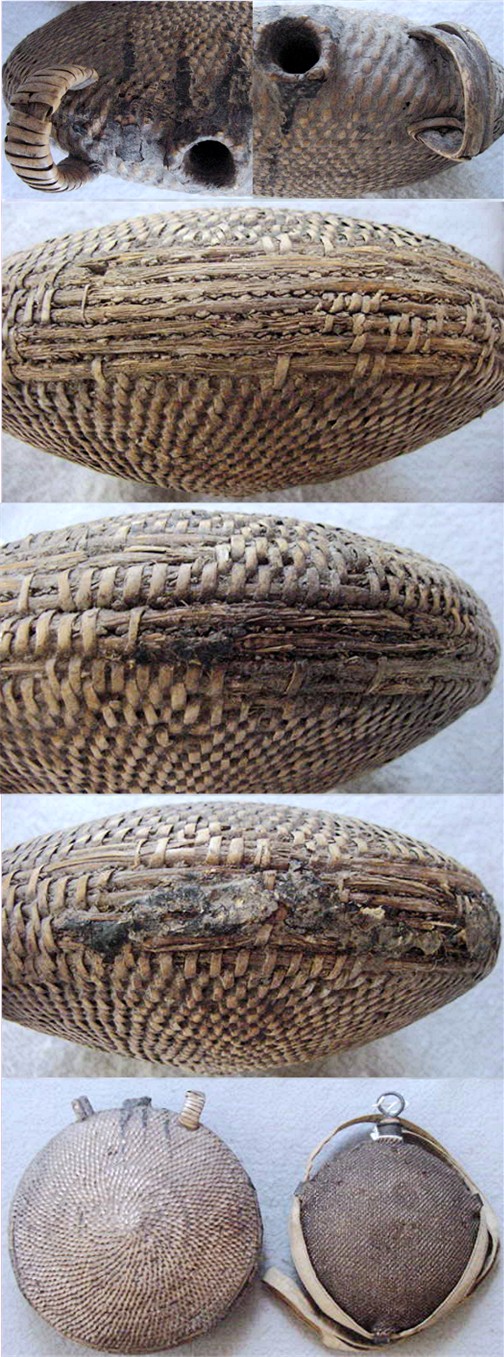 |
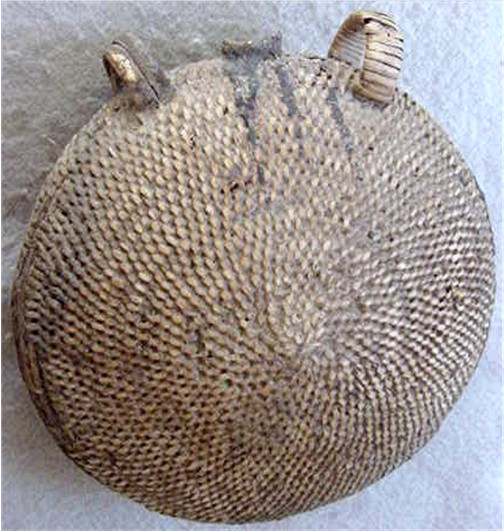 |
|
NO.
2
APACHE CANTEEN - IN VERY GOOD CONDITION:
Measuring 9” diameter and 3 ½” thick at the center, this
canteen resembles the ovoid shape of the Civil War and
Indian War US Army canteens without the distinctive flat
rim featured on the canteen listed below as “NO. 3”.
This canteen has survived in very good condition,
showing only the slightest evidence of wear and age.
The weave is tight throughout with no weak points or
breaks. The seam where the two sides meet are still
very tight showing no evidence of wear. There is an
application of pine pitch over the bottom half of both
sides of the canteen which was used to seal the weave.
These applications of pitch are commonly seen on larger
Apache tus and ollas and the pitch shows age and was
certainly applied concurrent with the use of this
canteen.
The spout is an amazing
example of basket maker’s skill as it is woven as an
integral part of the canteen, rather than being a
separate addition. The spout is full form with no sign
of wear, or any loss around the rim. This canteen was
not woven with any suspension strap guides and the
absence of the guides may indicate this canteen was
intended to be used solely in camp, or possibly on a
wagon. (See the size comparison photo below, showing
this canteen pictured along side a standard Civil War
canteen.) (0815) $500
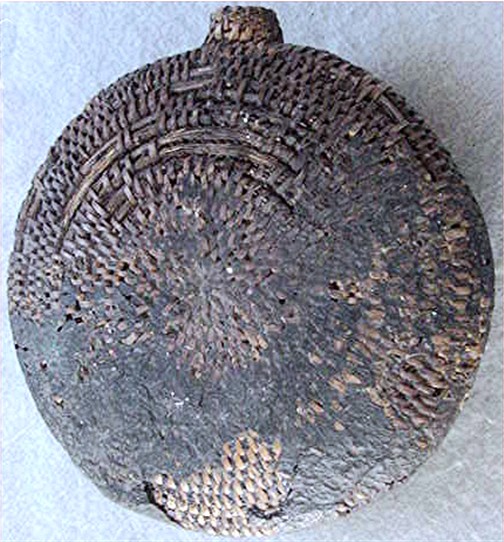 |
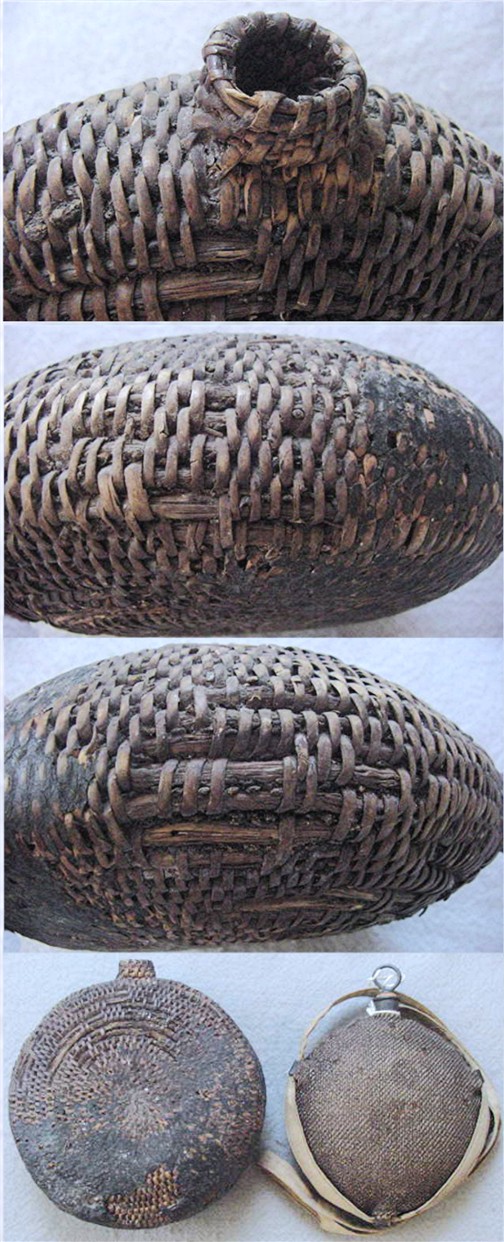 |
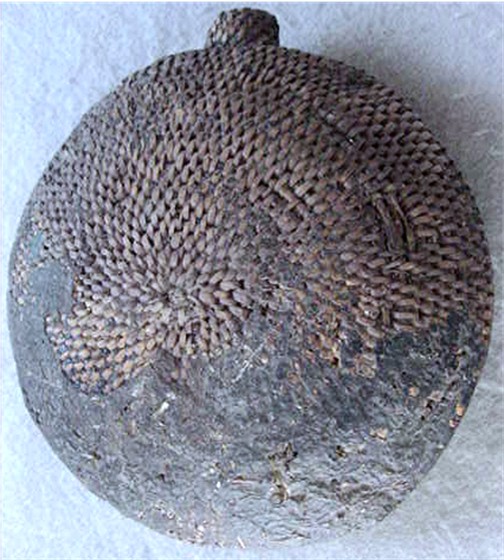 |
|
NO.
3
APACHE CANTEEN - IN VERY GOOD CONDITION:
Measuring 6” in diameter and 2 ¼” wide, this canteen has
survived in very good condition, showing only the
slightest evidence of wear and age. The weave is tight
throughout with no weak points or breaks. The rims of
each side which stand proud of the faces of the canteen
have experienced some wear with a couple of small
sections worn away, but this does not affect the
integrity of the canteen nor does this minor loss open
any seams or edges. On one side are two places where
pine pitch was used to seal the weave. These
applications of pitch are commonly seen on larger Apache
tus and ollas and both of these show age and were
certainly done concurrent with the use of the canteen.
The spout is an amazing
example of basket maker’s skill as it is woven as an
integral part of the canteen, rather than being a
separate addition. The spout is full form, showing
no wear, weakness or loss around the rim. Both
suspension string guides are present and intact.
The original full length suspension string is intact and
still quite supple with no weak points. (See the
size comparison photo below, showing this canteen
pictured along side a standard Civil War canteen.)
SOLD
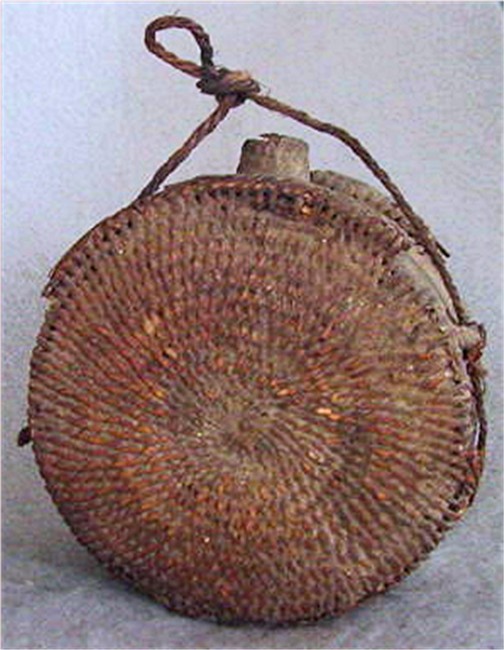 |
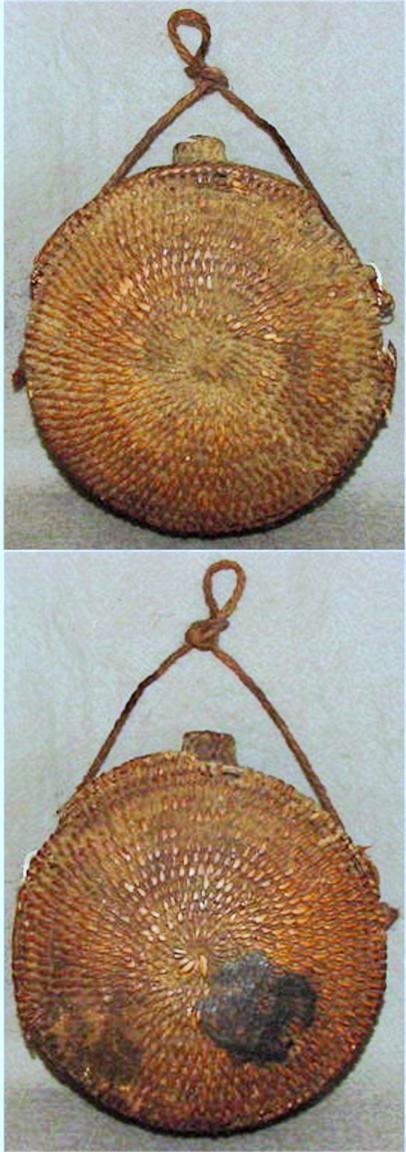 |
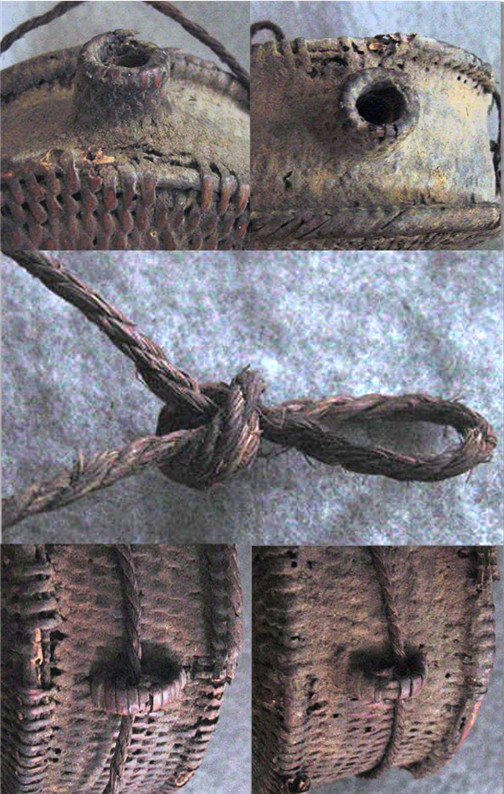 |
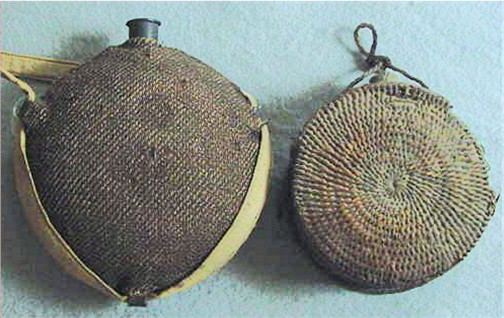 |
|
|
|
|
|
|
|
|
|
|
|
|
|
|

